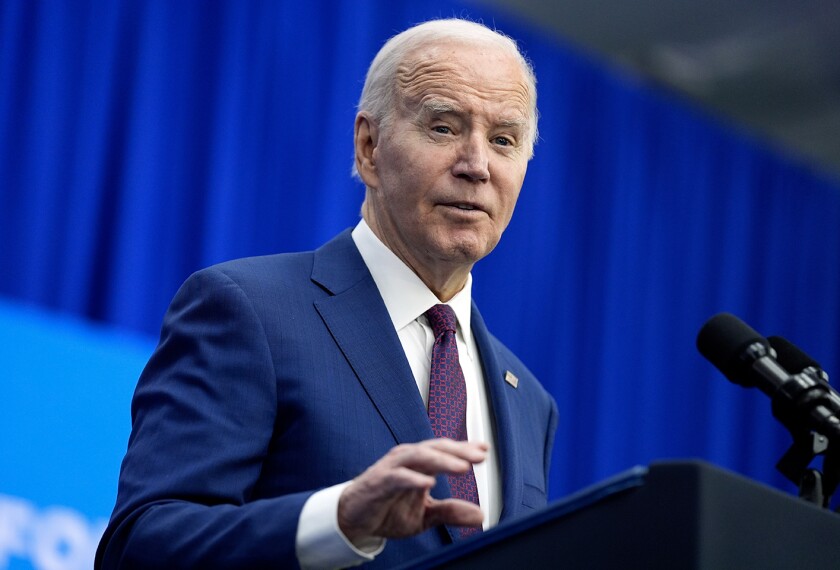Addressing the impacts of the coronavirus pandemic, creating more welcoming environments for students, and helping “advance systemic change” through community engagement are prominent parts of a U.S. Department of Education proposal that could soon influence hundreds of millions of dollars in federal spending.
The Education Department’s six proposed priorities for discretionary grants, published Wednesday in the Federal Register, also underscore the department’s overarching approach to key issues affecting students, educators, and schools.
These discretionary grants are funding streams that the department awards on a competitive basis. So it’s essentially up to the feds who gets the money, as opposed to the statutory formulas that determine funding levels for programs like Title I for educating disadvantaged students. Grant applicants that include one or more of the priorities are more likely to be awarded money by the department than those who don’t.
These programs tend to be a relatively small share of the department’s total K-12 education spending. In 2017, for example, discretionary grants received at least $700 million, while Title I alone receives more than $16 billion in annual aid.
Still, it’s a significant opportunity for the department to put its stamp on education programs. And that discretionary grant number can fluctuate quite a bit: The Obama administration’s initial round of Race to the Top grants involved over $4 billion.
The proposed priorities reflect U.S. Secretary of Education Miguel Cardona’s “vision for American education,” the department notes in the Federal Register. The agency goes on to say that meeting these goals requires a multifaceted approach instead of using strategies in isolation.
“This approach to the priorities provides a vision for systems-level approaches that build capacity for long-term change,” the department states.
Here are the six proposed priorities for discretionary grants from the Education Department:
- “Addressing the Impact of COVID–19 on Students, Educators, and Faculty.”
- “Promoting Equity in Student Access to Educational Resources, Opportunities, and Welcoming Environments.”
- “Supporting a Diverse Educator Workforce and Professional Growth to Strengthen Student Learning.”
- “Meeting Student Social, Emotional, and Academic Needs.”
- “Increasing Postsecondary Education Access, Affordability, Completion, and Post-Enrollment Success.”
- “Strengthening Cross-Agency Coordination and Community Engagement to Advance Systemic Change.”
For COVID-19, the department wants to prioritize projects that would address the pandemic beyond the length of the pandemic itself. Such projects could focus on needs assessments, fulfilling basic health and safety needs, and providing students with high-speed internet and connected devices.
To promote coordination between agencies and community engagement to affect widespread change, the department notes that successful grants could focus on connecting federal, state, and local efforts to address school diversity, justice policy, community violence, and voting access and registration, among other initiatives.
“Ensuring that students and families have access to nutritious food, housing, health services, employment/financial services, and other community resources is pivotal to ensuring success in the classroom,” the department says in the Federal Register.
The department will announce the final grant priorities at a later date. The public has until July 30 to submit comments on the proposals.
The Trump and Biden administrations differ greatly on these education grant priorities
None of the proposed priorities are necessarily surprising.
For example, President Joe Biden proposed “equity grants” in his fiscal 2022 budget blueprint to push more money to schools and districts with relatively large shares of disadvantaged students. And it’s hard to imagine any presidential administration not making pandemic-recovery efforts a priority for grants.
Every administration takes its own approach to prioritizing grant money it controls.
Former education Secretary Betsy DeVos sought to prioritize funding for grant proposals focused on STEM education, literacy, and school choice. It’s little wonder that the department’s proposed priorities under Cardona look quite different.
The Biden administration’s proposal would replace several Trump-era education grant priorities, including one for Opportunity Zones that the previous administration championed.






